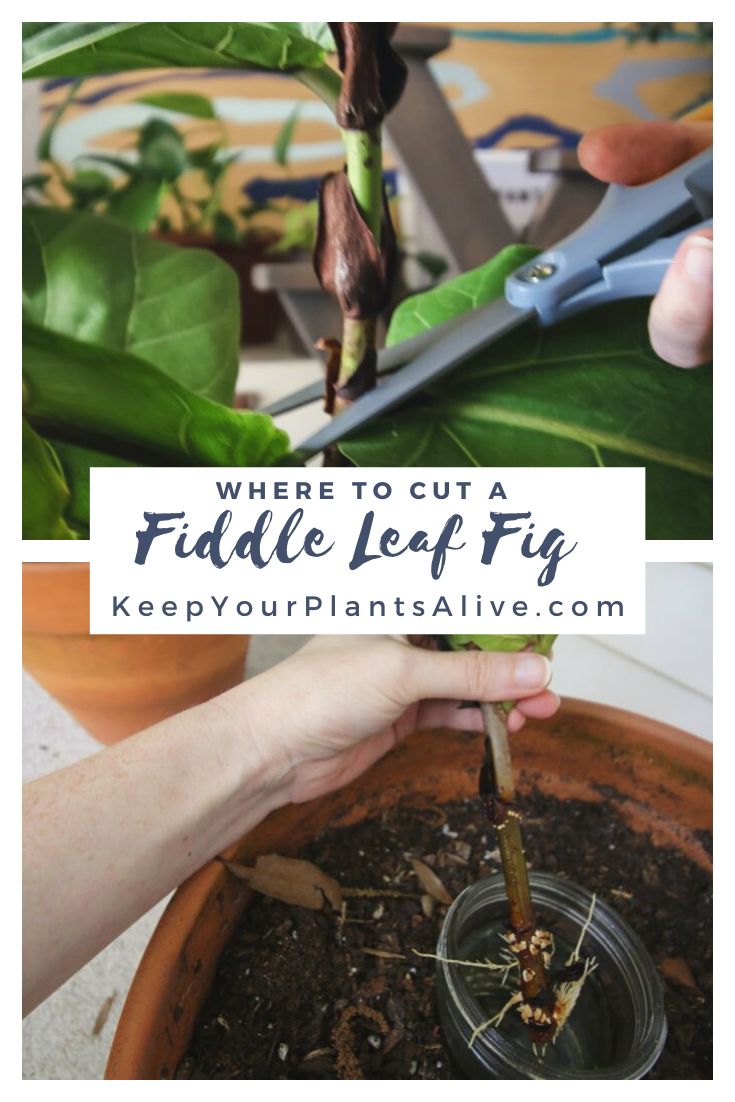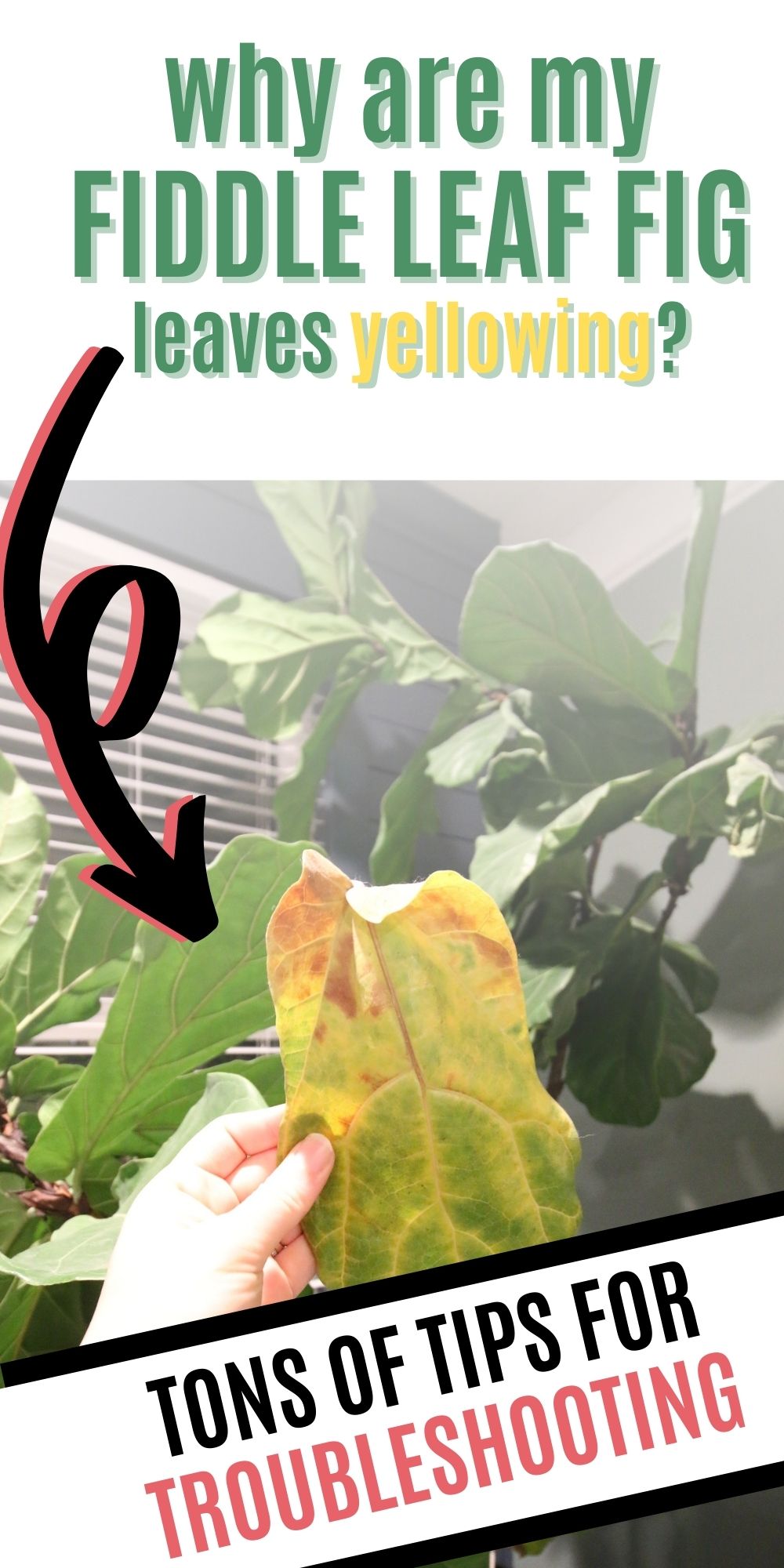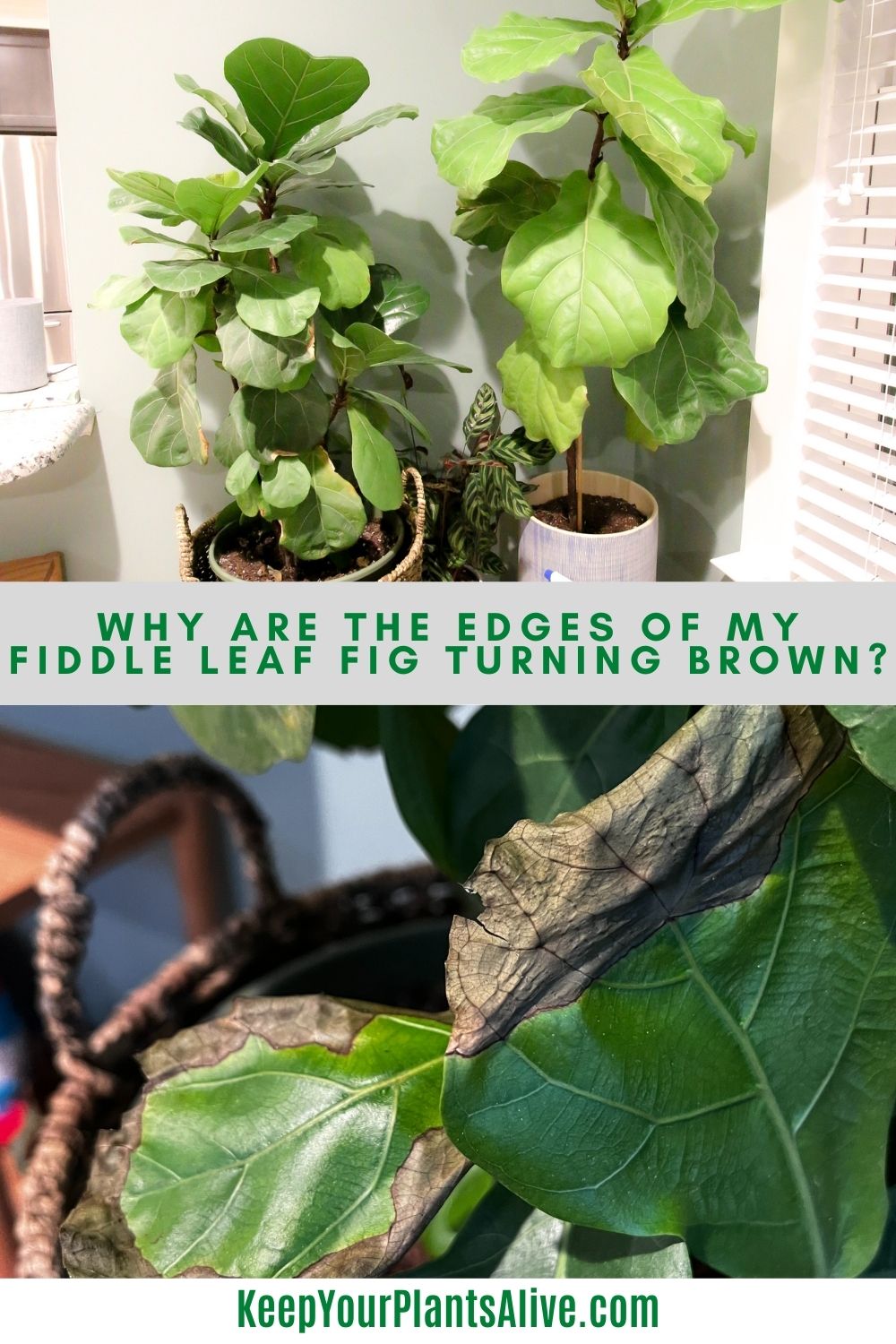Learn how to care for a fiddle leaf fig in winter with essential tips to help your plant thrive during the colder months. From transitioning your plant indoors to managing lower light and humidity, we've got you covered.
The fiddle leaf fig is probably one of the most popular houseplants nowadays – and for a good reason!
They are gorgeous-looking plants with large leaves and grow as tall as ever, almost resembling small trees!
Also known as Ficus lyrata, this plant enjoys a lot of bright and natural light and warm weather (and a lot of humidity, too).
But, when the temperatures drop, fiddle leaf fig care needs to be approached with special attention.
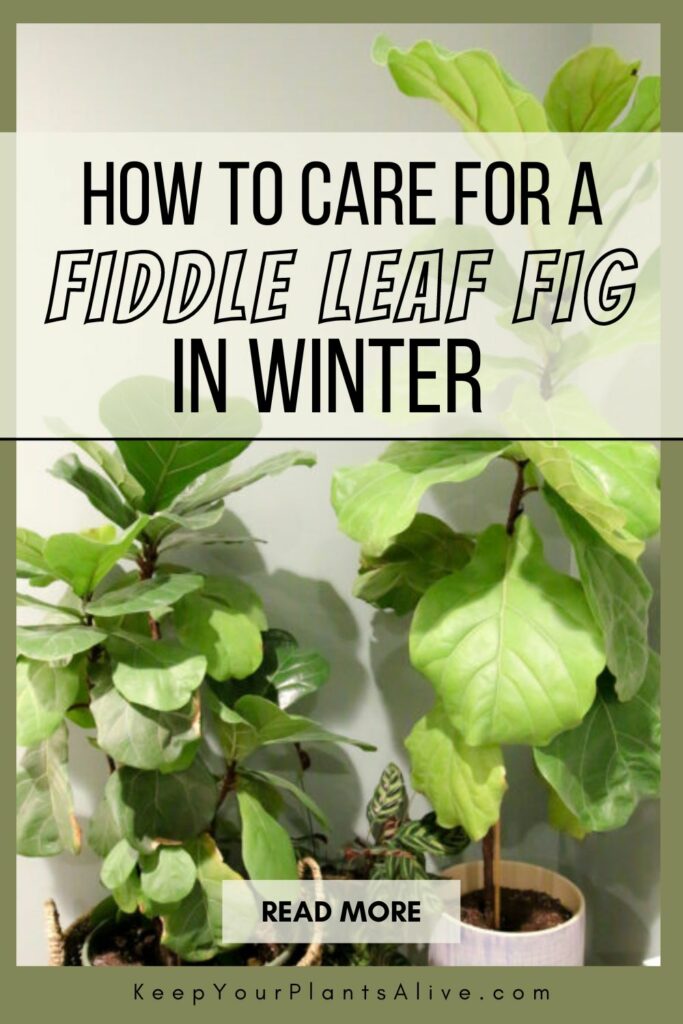
How to care for a Fiddle Leaf Fig in Winter
During the colder months, the fiddle leaf figs don’t grow actively – meaning it is a dormant season for them.
Here are some steps to take so that even if you are not a fiddle leaf fig fanatic, you can still help it thrive through the cold season.
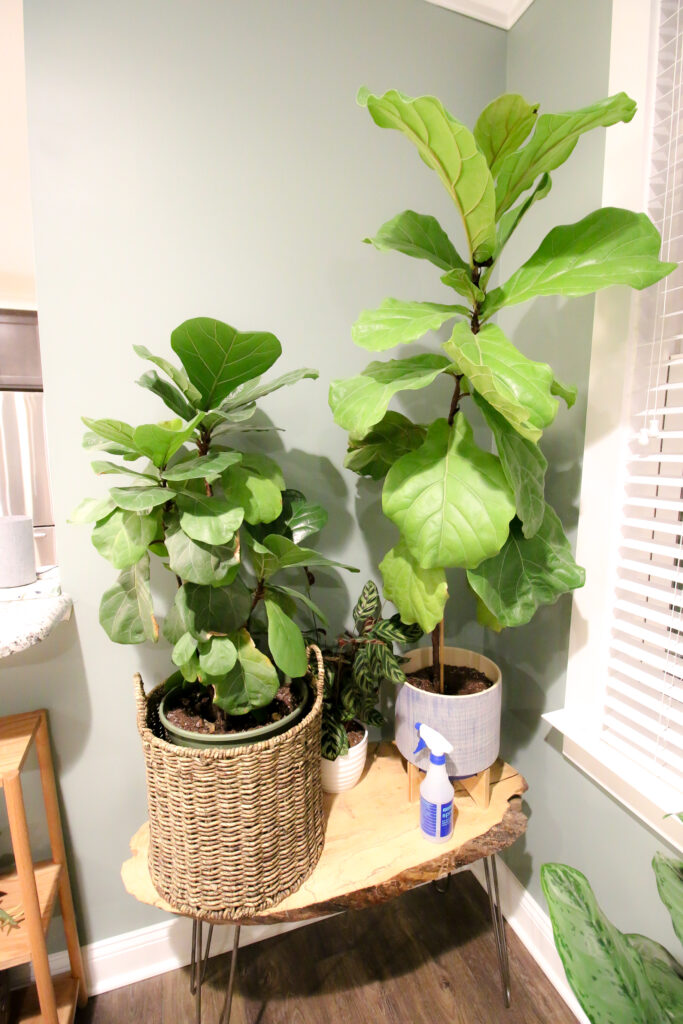
Bring the plant inside
The first step of caring for a fiddle leaf fig in winter is to provide it with the appropriate temperature. If you have placed your fiddle leaf fig on your porch or terrace (or anywhere outdoorsy), and if you live in a region that gets cooler than 55F during the night, then it is best to put it inside.
This is foremost a tropical plant, and it does not thrive in cold weather (even though it has been accustomed to cooler temperatures, but not always).
When the temperatures are low, this can result in the fiddle leaf fig freezing completely. So here is what you need to know as soon as you start moving the plant inside.
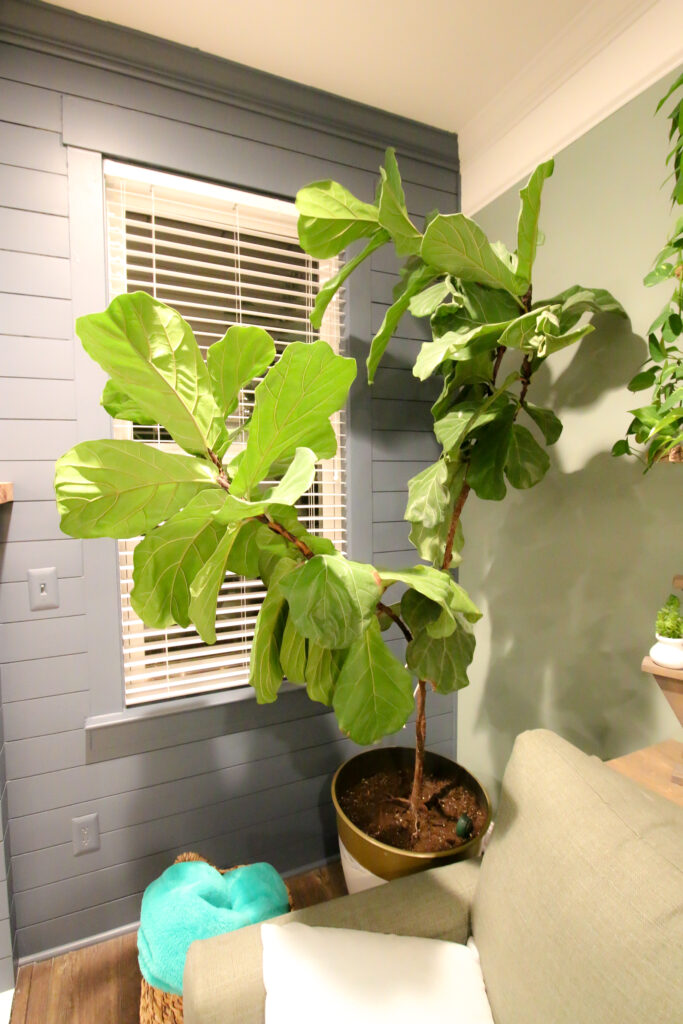
How to help a fiddle leaf fig transition from outside to the indoor space
Wondering how to take care of the fiddle leaf fig in winter? There are a few things you can do to make the transition for the plant a little easier.
You have probably heard about this, but the fiddle leaf fig plant does not like to be moved. However, this mostly applies if they are being moved to a less ideal location.
In some cases, this happens when you bring the plant home from an ideal living condition space.
Some of the worst locations to put your plant in are those with little light, humidity, and constant low temperature. Therefore, fiddle leaf fig winter requirements include placing it in a bright and warm spot.
Avoid shocking your plant this way and create a transition period for them. Before bringing it inside, move it from a sunny spot to a shady one.
Leave it there for a few weeks first. This can help your transition and will hopefully result in less damaging results.
Still, you should keep in mind that the fiddle leaf fig might show some negative side effects from the move such as yellowing leaves.
Now, we might think our homes have a lot of natural light, but through the eyes of a fiddle leaf fig, this may be wrong. So when you bring the plant inside, you need to be sure to pick a bright and well lit location to keep it happy.
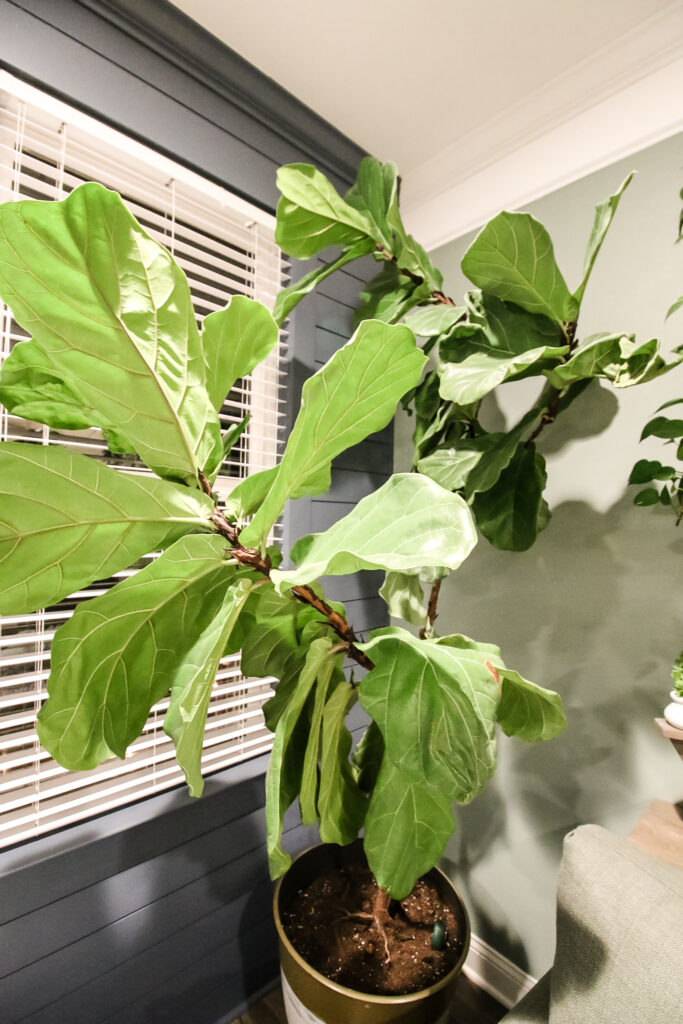
Deal with lower light
Less daylight hours, gloomy weather, and little sunlight means an overall lower level of light during the day, but there is a way for you to deal with lower light during the winter.
You can start by getting a grow light or place your plant in the center of the brightest window of your home.
Even in the winter, keep your plant out of direct light which can burn the delicate leaves.
Adjust watering
Did you know you need to adjust the water levels in the winter months as well?
Overwatering your fiddle leaf fig during winter can lead to killing it!
Since we mentioned earlier that the plant is dormant for the winter months, it means that you need to water it less.
The best way to check if your plant needs watering is to feel the top two inches of the soil – if they are dry, then you can add some water to it.
Keep in mind that in winter, the soil needs a lot more time to dry, so you need to water it less frequently.
Refrain from using a schedule, and instead water only when it feels dry. Make sure the water drains all the way through and does not pool in the bottom of the pot - which can cause root rot.
Slow down on the fertilizer
It is normal for the plant to stop or slow down its growth during the cold season. Now, because of this, you will not need to add so much fertilizer to your fiddle leaf fig as you do during the summer and springtime.
If you fertilize your fiddle leaf during winter, you may contribute to a buildup of unused fertilizer in the soil or having the fertilizer flushed out of the pot and wasted away.
So, as part of caring for fiddle leaf figs in winter, stop fertilizing during the winter, or fertilize a little bit, and less often – if you see any signs of growth.
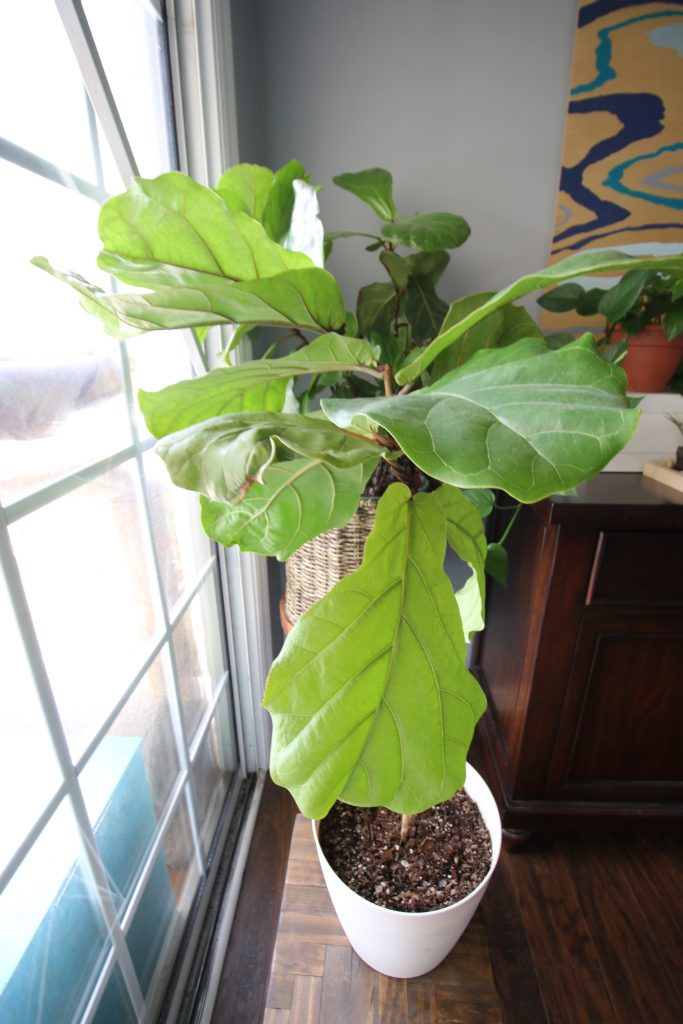
Watch the humidity
Another thing that we mentioned earlier is that the fiddle leaf fig wants humidity – a lot of it. As you have noticed the dry skin that comes when the temperatures start getting cooler, your plant notices it, too.
So, putting your fiddle leaf fig in a spot where it doesn’t get much humidity can lead to a disastrous situation.
In fact, I have lost more fiddle leaf fig leaves over the years to low humidity than any other factor!
This is a tropical plant, so they LOVE humidity. They will show dimpled or crispy edge leaves if the air is too dry.
Once you notice this, it is time to take some immediate action. Consider adding a humidifier or putting out some pebble trays to help increase the humidity level in the room.
Also, note – misting does nothing to improve the humidity levels. It can only help momentarily, but once you’ve misted your plant, things will return to how they were – dry.
Having a proper heating and cooling system is essential. Ensure no vents or fans are blowing directly into the plant – this will damage the leaves and contribute to leaf drop.

Dust management
Last but not least, keep your plant clean. Dirty leaves can't absorb as much light, and in the winter this is especially important!
Dust it often, and don’t let any particles on the top of the leaves. Simply wipe them with a soft damp or dry cloth - no leaf shine required.
So there you have it! There is a way of caring for your fiddle leaf fig plant in winter – and do it with ease!
Thanks for reading!


Hey there, I'm Morgan, a houseplant enthusiast from sunny Charleston, South Carolina. Growing up surrounded by my mom's lush orchids and African violets, I discovered the magic of bringing nature indoors. Thanks to the pandemic, I delved deeper into houseplants, discovering their power to uplift moods and transform spaces. I'm here to spill all my secrets, helping you pick the perfect houseplant - and make it happy. Let's keep your plants alive, together! 😊

